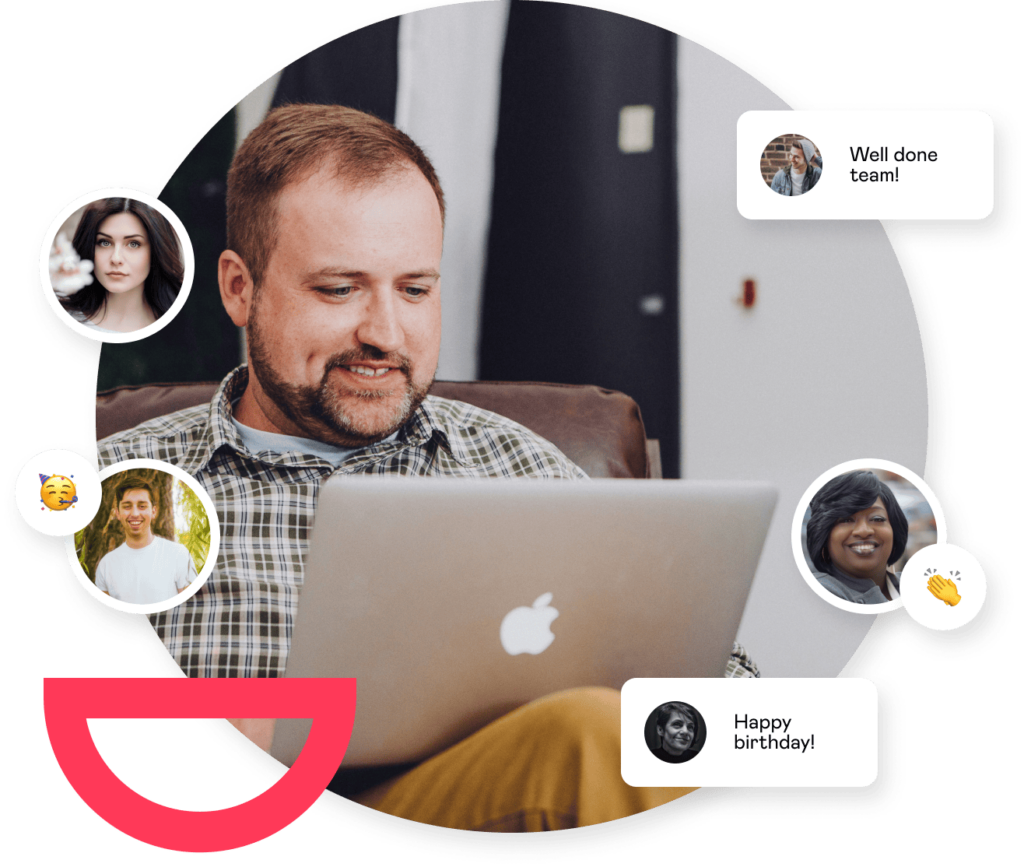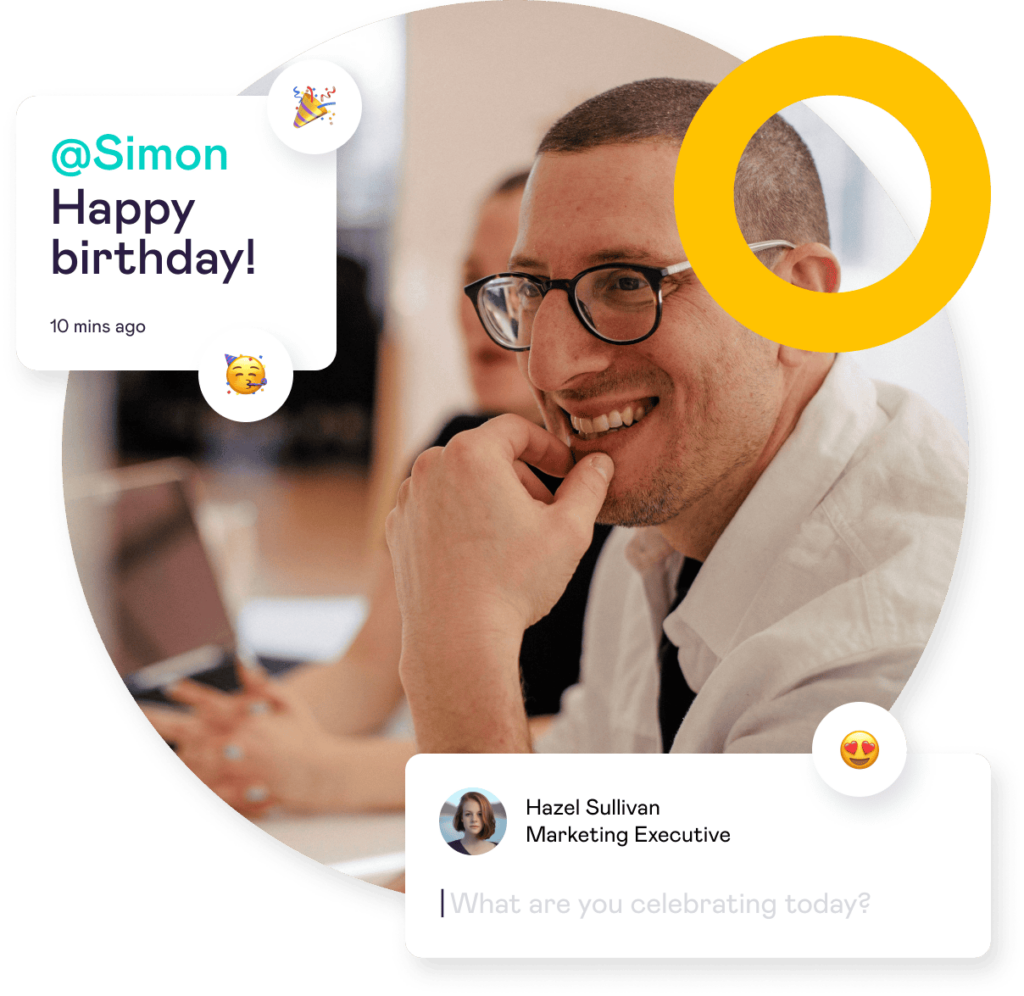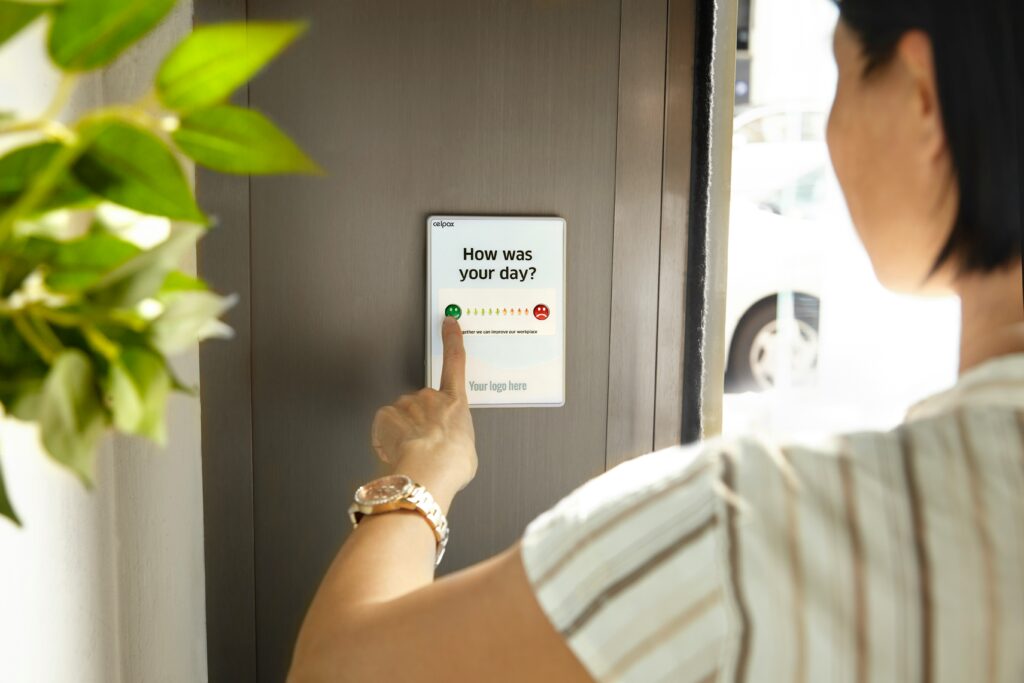A positive employee experience isn’t just nice-to-have, it can drive performance, employee engagement and profitability. But how do we measure employee experience in the workplace?
Research from Gallup suggests that $8.9 trillion is lost globally each year due to low employee engagement and workplace stress, a trend that can only be countered by improvements to overall workplace culture.
At Mo, we have been researching the best ways to improve feelings of accountability and belonging across a diverse number of industries and teams for nearly a decade. We’ve learned that understanding employee experience requires more than annual surveys. It requires a multi-metric approach.
In this article, we explain why employee experience should be your priority. Rather than relying on simplistic surveys, great employee experience can only be achieved through a dynamic, tailored approach that encompasses multiple metrics. We’ll cover:
- Employee engagement surveys
- Culture and wellbeing
- Peer-to-peer communication
- Work/life balance indicators
If you’d like innovative and effective support with your company culture, speak to one of our engagement experts and get a demo of Mo.

Prioritising Just One Employee Experience Metric Doesn’t Give You the Full Picture
Employee Net Promoter Score (eNPS) is a widely used metric for employee loyalty that asks staff one simple question: “How likely are you to recommend our company as a great place to work?”
Being a “great place to work” is important because it helps retain your best staff and attract excellent future candidates. If you don’t have a competitive salary to offer, your culture is your unique selling point (USP) in the employee market. eNPS is a metric that provides insights into employee feelings. If combined with an effective action plan, this can be extremely effective.
eNPS is a useful metric, but it’s far from complete. Engagement surveys, which are used to measure eNPS, only reflect the questions you ask, and how often you ask them. This means that the data can be partial, outdated, or too shallow to give you the full picture.
Let’s explore these problems in more depth to establish clearer ideas of how to choose and access your KPIs for employee experience.
Why Aren’t Engagement Surveys the Best Solution?
Measuring employee experience has never been elementary. As hybrid and remote work become the norm, face-to-face interactions are increasingly rare, making it even more challenging to truly understand how employees are feeling.
As a result, many in upper management have turned to engagement surveys to understand exactly how their teams feel about workload, stress levels, wellbeing and company culture.
While useful, engagement surveys are incomplete. Firstly, employee experience is constantly changing. Small shifts over time, such as team restructuring or a lack of meaningful recognition, can have a cumulative effect that rivals mass layoffs for negative impact.
Shona Cronly, former Global Director Talent & Engagement at HBX Group, recommends a comprehensive approach to measuring employee experience.
“Engagement surveys are great as they can help you to dig into stuff like “Do I feel valued?”, “Do I trust my manager?”, “Is my work meaningful?”. They’re great for spotting issues early. Just be careful not to over-survey people or they’ll just start clicking random answers.”
Many employees are wary of engagement surveys, concerned that their honest feedback might have repercussions. And when engagement surveys detect a problem? They lack nuanced action plans to correct the issue.
Employee Experience Metrics and KPIs That Work
So, what is the alternative? Rather than basing your HR policy on a single metric, expand your scope to consider other insights that will give you real-time data. Ensure that any software you bring onboard has an insights dashboard to show you where improvements are happening and where to place your focus.
“Start with eNPS (that’s the “Would you recommend working here?” score),” recommends Shona. “Remember this is at a point in time and depending on what is happening the feelings of your people can change quickly… one bad meeting or decision and their views can alter your eNPS radically.”
Now, let’s jump into the best ways to measure employee experience for a holistic view.
Behavioural and Sentiment Data
If you really want to understand how your people are doing, you can’t just rely on numbers. You need to listen to what they’re saying and how they’re saying it. That’s where behavioural analysis comes in.
Real-time behavioural analytics can uncover insights long before they appear in turnover stats.
Behavioural and sentiment data includes:
- Language used in messages, chats, or feedback tools
- Participation in peer-to-peer recognition
- Frequency of knowledge sharing or collaboration
By analysing language patterns in feedback, surveys and communication platforms, you can gain a richer picture of how your team is feeling in real time.
This qualitative data shines a light on what’s working and what’s not, long before it shows up in attrition rates. The result? More engaged teams and a noticeable uplift in productivity. It’s a reminder that behind every performance stat is a human experience worth listening to.
One of the ways we measure this metric at Mo is by analysing how many Moments are shared across our organisation. Moments are updates that our employees share on their Mo feed. They include topics such as:
- Recognition for hard work
- Progress updates
- Life milestones and weekend activities
- Rewards for helping or hitting targets
Moments are shared across different teams and hierarchies, helping to break down boundaries and bring the whole company together. It works for organisations of all sizes, as long as they have access to a laptop or mobile phone.

Work-Life Balance and Wellness Indicators
When employees are empowered to work flexibly and have genuine support for their mental health, they are more likely to bring their best to work. It’s that simple.
Shona recommends monitoring wellness and stress as important metrics of employee experience:
“Other solid signs of a healthy culture: people are getting promoted, moving teams and growing internally. And don’t forget to look at things around wellbeing, how your people feel about their work-life balance. All too often these days, we see many employees showing signs of burnout.”
Companies that prioritise work-life balance don’t just end up with happier employees. They also enjoy measurable gains in performance and profitability.
Whether it’s through flexible hours, mental health days or simply setting clearer boundaries, small changes can have a massive impact. Investing in balance is not just good ethics. It’s good business.
Positive communication plays an important role here. As an HR leader, consider monitoring team discussions during meets or on visible communications threads to ensure that everyone is outwardly adhering to your code of conduct. And if an employee reports intimidation or condescension, stamp it out immediately.
To measure communication as a metric, track:
- Work-life balance ratings in feedback surveys
- Participation in team-building and wellness initiatives
- Hours worked outside of contracted times
- Uptake of mental health days or other wellbeing benefits
Conduct annual or semi-annual interviews with your employees to understand how they feel at work.
Ask employee experience questions like:
- “How supported do you feel in maintaining work-life balance?”
- “What, if anything, makes it harder for you to disconnect?”
Applying this approach to exit interviews will also be effective. Ask your employees to score their experience before giving further detail.
Measure Learning Opportunities
Continuous learning is a key indicator of a positive employee experience. Professional growth shouldn’t stop at onboarding. Teams that are encouraged to learn, grow, and stretch themselves are more likely to stick around and thrive.
Key career development metrics include:
- Uptake of learning and development programmes
- Internal mobility rates – how often are people being promoted?
- Completion of personal development goals.
We’ve seen it time and again: when people feel like their organisation is invested in their future, they give more in the present. Learning is the engagement superpower that too many companies overlook.
By giving your employees attractive work opportunities, you are likely to see a fall in your attrition levels.
“If people are leaving in numbers, it’s worth paying attention to. But weirdly, zero turnover can be just as sketchy. It might mean people feel stuck or your managers are not dealing with underperformance,” warns Shona. “On the flip side, ask new hires how things are going during onboarding. This is a super important part of the employee experience that many don’t pay enough attention to.”
How to Take Action on Employee Experience KPIs
Even with the right metrics and KPIs in place, taking action on your data can be difficult for teams of all sizes. Especially in under-resourced teams or large organisations with complex hierarchies.
Rather than tackling each issue individually, look for patterns across multiple data points. We recommend an agile approach to your employee experience by tracking numerous metrics at once.
Unsure if you need to take action on your employee experience? After gathering your employee responses, it’s time to analyse the results. Here’s a simple test of your employee experience:
Did your employees highlight any of these issues?
- Lack of recognition?
- Feelings of isolation?
- Communication silos?
- High levels of stress?
- Impersonal working environment?
If issues like these are highlighted, you’ll need to take action. This can include:
- Creating a cross-functional culture taskforce
- Running monthly or quarterly ‘culture sprints’ across teams to address key issues quickly
- Involving managers in making grassroots improvements
If two or more of these issues were raised in your conversations with employees, then your organisation is probably suffering from the detrimental aftermath of the pandemic. Whether your teams are desk-based or deskless, the pandemic caused unprecedented disruption to every work environment. Many employees are still adapting to the permanent changes created by disruption to global work patterns.
The Impact of Remote Work on Employee Experience
Remote work, while temporary for many, has left a lasting impact on employee mental health. Even after many workplaces have returned to “normal”, employees are reporting higher levels of stress.
When it comes to employee experience, some office workers have experienced the most lasting changes. Indeed, remote or hybrid work tends to benefit older employees or those with families, leaving a growing proportion of the workforce feeling isolated and socially anxious.
Attrition is the Ultimate Employee Experience KPI
And finally, if you see rising or consistently high attrition rates, it’s time to take action on improving the overall experience for your employees at work. Employee turnover is not inevitable. And while taking action on employee experience feedback can seem like a monumental task, Mo is here to help.
The Solution? Bring Disconnected Teams Together On One Platform
A better employee experience is the secret to improved productivity and lower attrition rates, and Mo’s platform is expertly designed to improve these metrics by highlighting “invisible” work.
Mo helps improve productivity by lifting morale through communication, recognition and rewards. Together, these elements work to improve employee experience and create great places to work.
Take Axol Bioscience. Since we started working with their team in 2021, they have boosted their Employee NPS score by 57% and continue to see improvements. But more importantly, they’ve seen holistic improvements across the whole of the organisation.
There is no silver bullet when it comes to employee experience. As Shona reminds us, it’s all about being open to a wide range of data points, consistent action, continuous conversation, a willingness to act and, most vitally, an authentic interest across your organisation’s leadership.
Mo Helps Improve Employee Experience
Mo is a culture and engagement platform that uses data insights to drive real improvement in engagement scores while reducing staff turnover. We strategically help people teams create great places to work through continuous, positive action.
If you’re looking for ways to take action on measuring employee engagement, learn more about how to shift the dial at the manager level and transform insights into action. To find out if you’re eligible for our money-back guarantee, book a demo with our team.




